The Big Read UK business & economy
How the pandemic transformed Britain’s commuter towns
Hybrid working and recouped travel time are giving a lasting boon to the economies, ambitions and even infrastructure of satellite communities
Receive free UK business & economy updates
We’ll send you a myFTDailyDigestemail rounding up the latest UK business & economy news every morning. Sign up Enter your email address
In North Berwick, a seaside town half an hour east of Edinburgh by train, a search for pandemic silver linings leads to the Bass Rock community group.
Until coronavirus hit, the group — named after the volcanic rock and seabird haven that sits in the Firth of Forth — did not exist. It’s the legacy of a “resilience group” set up by the town to deal with the immediate impact of the virus.
Now two dozen or so volunteers devote evenings and weekends to local causes: refurbishing benches around the picturesque harbour, running fundraisers for the local high school or helping the local community centre support vulnerable families through the cost of living crisis. “We’ve got
Andrew Hill in North Berwick and Emma Jacobs in Hastings NOVEMBER 6 2022a reputation of being able to help out where people need a hand,” says Andrew Pendleton, one of the group’s founders.
A third of Bass Rock’s volunteers are drawn not only from the usual ranks of retired or part-time workers, but from residents who used to commute into Edinburgh. Remote working has freed up time they can devote to the community they came to know better during lockdown.
“The group wouldn’t have come together in the way it had without the pandemic or working from home,” adds Pendleton. “It was a real community invigorator.”
Such groups are just one example of how a change in the habits of commuters, now spending only two or three days in the office, is altering the behaviour, economy and even infrastructure of communities around the UK.
Some of the associated changes, for example improved community spirit, are largely anecdotal. But even patchy data on local spending, residential house sales, car park use and social and sports club memberships hint at a wider shift.
What is playing out is a version of what some local politicians and commentators predicted during the first wave of coronavirus: that economic activity would shift from city centres to outlying areas. This, in turn, is accelerating attempts by authorities outside major cities to encourage more local investment and activity.
Analysis by Tera Allas, McKinsey’s director of research and economics, using public data from the Office for National Statistics and Google, suggests the proportion of people travelling to work is still below pre-pandemic levels in every UK local authority, with London lagging behind the rest of the country.
A local high street spending database supplied by the Social Investment Business, a regeneration charity, and analysed by the Financial Times, shows that spending in-person in the City of London in September was down 27 per cent in nominal terms on 2019 levels — a 35 per cent drop, when
adjusted for inflation.
Recoveries have come at wildly different paces — even in the suburbs
Change in in-person spending (�) compared to same month pre-pandemic
Nominal Inflation-adjusted
City of London Epsom and Ewell East Lothian Hastings* Great Britain
��
L o c k d o w n I L o c k d o w n I I I I I
��
�
-�� -�� �� -�� -���
O July ���� April ���� January ���� October ���� July ���� April ���� January ����
Source: SIB, FT analysis • Inflation adjustment uses CPI
* Hastings figure uses the Hastings built-up area. The others are defined using local authority
And a survey by King’s College London’s Policy Institute showed three-quarters of London workers
believed they were never going to spend five days a week in the office again. A reduction in daily commuting is one of the main benefits, they said.
Yet Mark Kleinman, visiting professor at the KCL institute, still believes big cities will not be hollowed out: “I’ve never been convinced that tumbleweed will blow through Oxford Street or the City of London in the long term.”
It is hard to gauge how permanent the work-from-home habit will prove with the country braced for a tough winter of higher energy bills and increased mortgage costs, as well as a recession that could lead to job losses.
Whatever the outcome, the permanence of hybrid working will have implications for local government spending, infrastructure and the future of retail, which is playing out differently in commuter towns across the UK.
Hazel Blears, former UK minister and chair of SIB, says: “If local councils can empower community activists, then by coming together and bringing in private capital, they can make things happen.”
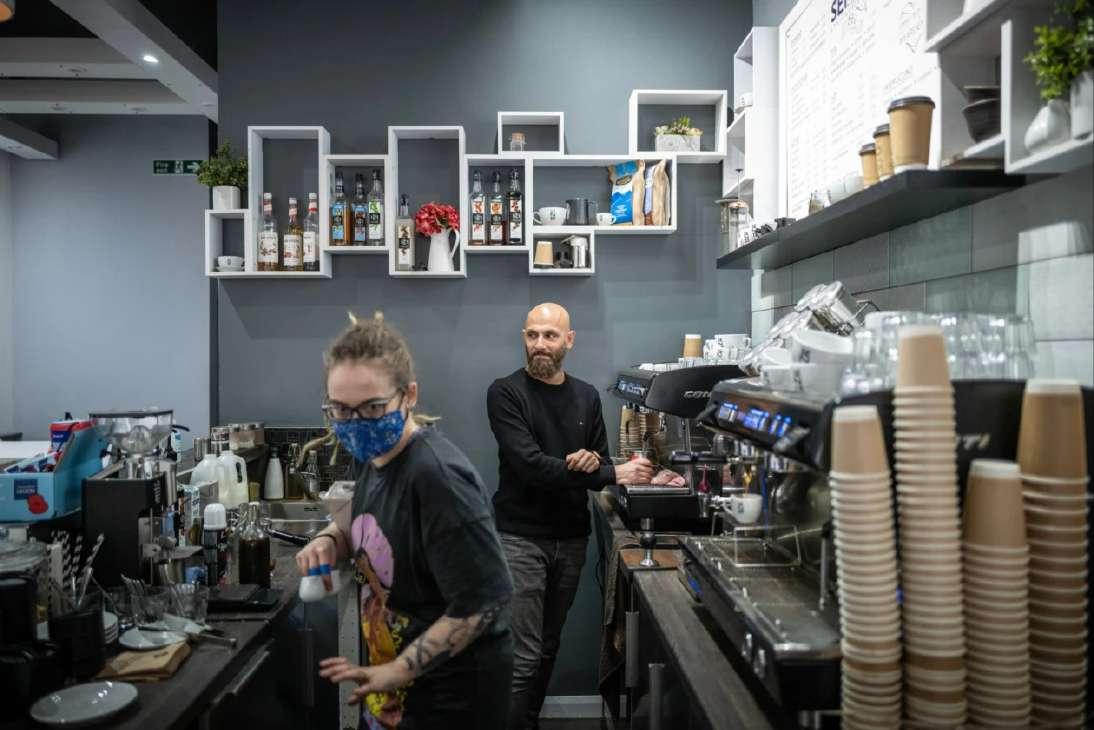 AJ, the owner of Senzo, a coffee shop next to Epsom station, has seen sales to morning commuters drop from around 300 to around 100 each day ©
AJ, the owner of Senzo, a coffee shop next to Epsom station, has seen sales to morning commuters drop from around 300 to around 100 each day ©
Shop local
In Epsom, a 34-minute train journey from Waterloo station in central London, the car park traditionally used by commuters has lost almost half of its customers since the start of the pandemic. The shift in commuter behaviour cuts both ways.
This has also squeezed Senzo, the coffee shop next door that bills itself as the town’s “first independent espresso house”. “We were doing 300 sales between 7 and 9am before and we have barely 100 now,” complains AJ, Senzo’s owner. Some customers trickle in after 9am but more staff are needed to serve them at the tables.
Steven McCormick, who represents the Residents’ Association on Epsom & Ewell borough council, says numbers for other car parks are almost back to pre-pandemic levels, suggesting more people are spending time locally. McCormick, a project manager working mainly in the financial sector, says: “I think it’s down to the company they work for: whether or not it encourages [remote working].”
The SIB database presents a mixed picture. The FT’s analysis suggests that spending in the borough only recovered back to 2019 levels, the last pre-pandemic period, over the summer — by which time in-person spending in the country at large had increased by about one-fifth.
Karen Pengelly, manager for Epsom’s Business Improvement District, which uses the slogan “Go Epsom”, says “habits have changed and we are still trying to quantify it”.
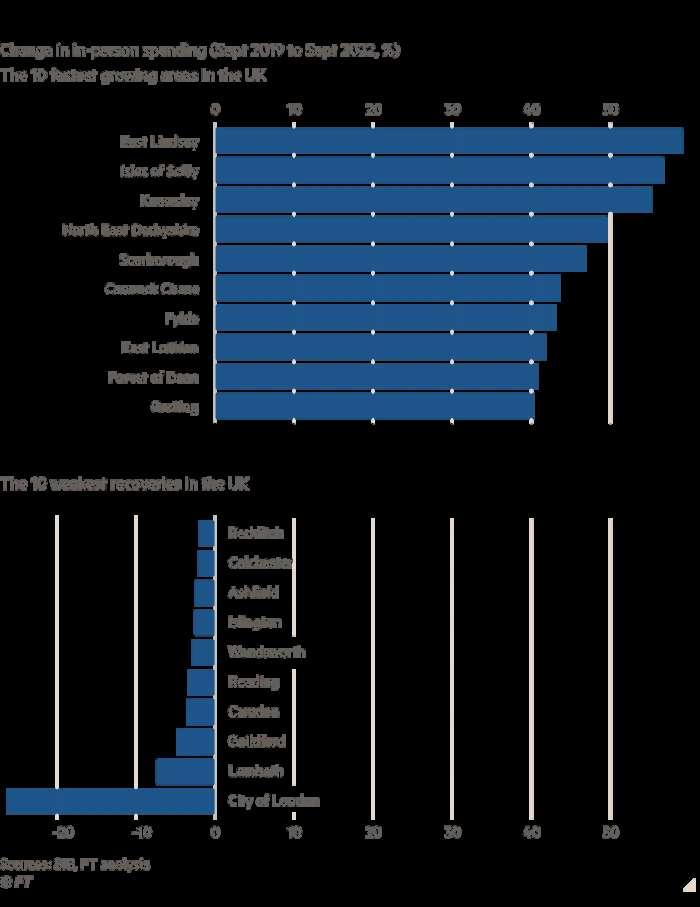
She believes footfall in Epsom’s main shopping district, which appeared busy on a recent rainy Tuesday afternoon, is now more evenly distributed through the week, rather than a marked peak on Saturdays.
The SIB data reflects those changing habits: spending in Epsom in August enjoyed a 16 per cent rise among people living within 2 miles, but an 11 per cent decline among those travelling to the area from further afield.
A clearer picture has emerged in East Lothian, the county that includes North Berwick. High street spending by locals increased 55 per cent between September 2019 and this September, making it one of the biggest beneficiaries of an increase in high street activity across the whole pandemic. Overall, local spending is up 41 per cent since 2019.

John McMillan, Scottish Labour councillor and East Lothian’s provost (the equivalent of mayor elsewhere), says economic development plans were under way before the pandemic. A strategic goal of its strategy was “to increase the proportion of . . . residents working in and contributing to East Lothian’s economy”. The work-from-home revolution gave that ambition a boost, he says, with local businesses quickly adapting.
Jo McNicol, whose husband’s family has farmed near North Berwick since 1908, opened a café, The Drift, in 2018 on the fringe of its land with views over the Firth of Forth, using repurposed shipping containers. What became a takeaway service during lockdown — “a mental health survival tool”, she calls it — has now reverted to normal business, but also caters to the work-from-home customers. There is no public WiFi, but locals drive up for meetings, and tables can be booked for up to 90 minutes.

Behold the ‘Down from Londons’
Beyond the traditional commuter belt, the pandemic also changed the ambitions of communities such as Hastings, on England’s south coast — an hour and three-quarters train ride from London. Sean Dennis, who runs a social enterprise providing business advice, finance and support, says the “down from Londons”, or DFLs, have moved from more expensive areas in or near the capital and stayed. Some have set up cafés and catering businesses.
He is also “seeing new breeds of commuter who . . . don’t need to commute so often or are moving . . . to places like Hastings as it’s more manageable to commute a couple of times a week”.

Graham Peters, co-chair of the Hastings Town Deal board, says the car park at Etchingham station, in a village en route to London, is now only a third or half-full most days. Before the pandemic, “a lot of our friends left in the dark and came home in the dark: that is changing now”, he adds.
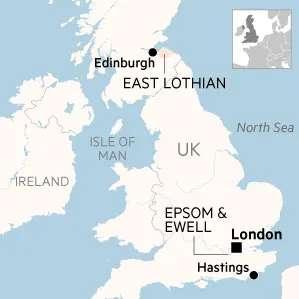
Spending in Hastings, according to the SIB data, is up by quarter in nominal terms since 2019, driven by a 30 per cent increase in spending by people living within 2 miles of the seaside town.
The influx of new residents, coupled with two years of
Commuters at London Bridge station Hybrid working has changed the frequency and times people travel © Charlie Bibby/FTlockdowns, has elevated Hastings’ aspirations from promises of high-speed rail or better motorway links with the capital, to a cohesive and sustainable neighbourhood, says Jess Steele, a community activist and chief executive of Hastings Commons Community Land Trust, which runs co-working spaces in formerly derelict buildings held in common ownership.
A small town “doesn’t want a load of commuters”, she continues. “What the pandemic has done is shift that divide between commuters and residents . . . [Now] it’s Zoomers and residents.”
Some of the shift towards more remote work, whether at a long distance, as in Hastings, or in the traditional commuter belt towns such as North Berwick or Epsom, has had a knock-on effect on the housing market.

Prices of residential property in Hastings’ town centre, for instance, have risen at 8.8 per cent annually between 2019 and 2022, according to figures collated by TwentyCi, a property analytics company, compared with the 6.8 per cent annual growth rate for the UK as a whole. It now takes just 38 days to sell a property in the centre, against 63 three years ago and 45 on average in the UK, though the recent increase in mortgage rates is bound to weigh on sales.
Kate Darbyshire, director at John Bray estate agents in Hastings Old Town, has seen a “huge influx of people . . . who may have been [living and] working in Tunbridge Wells, London, Brighton”.
“All of a sudden, people are re-evaluating what’s important in their lives, and realised that they can get a lot more for their money [here],” she adds.
In North Berwick, where residents talk about the cost of property with a mixture of amazement and ruefulness, price rises are in line with the rest of the UK, but the time to sale has halved from 59 to 27 days A lot of sales happen off market according to residents
27 days. A lot of sales happen off-market, according to residents.
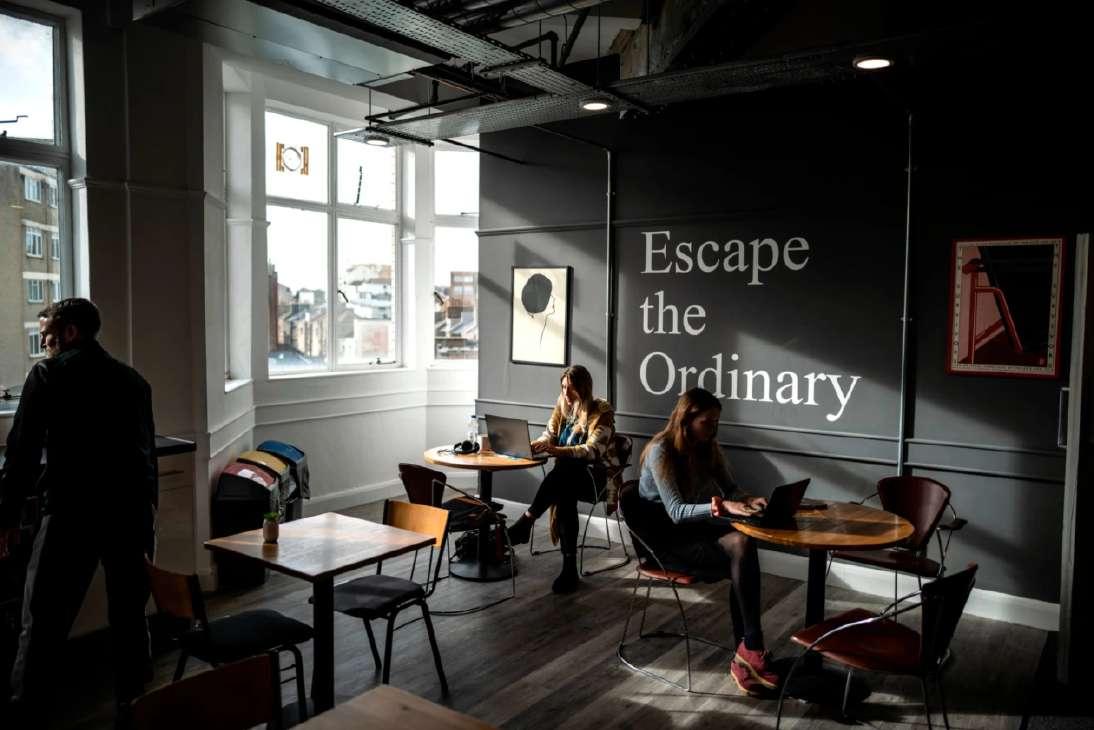 Georgie Packer, who works remotely in the charity sector settles in at the Freedom Works in Hastings, which was converted from an old Debenhams
Georgie Packer, who works remotely in the charity sector settles in at the Freedom Works in Hastings, which was converted from an old Debenhams
A space of one’s own
As more people embrace the flexibility afforded by remote working, so too has demand risen for a “third space”, a happy medium between home and office.
A survey of 20,000 adults, conducted by Demos, a cross-party think-tank, in December 2020, revealed that 63 per cent of them considered this one of their top three priorities for local amenities. Finding this alternative choice to the work-home binary is still proving difficult, however.
Epsom councillor McCormick, who rents a basement office, bemoans the dearth of formal coworking space in the borough. To help fill the gap, Devenia Besant, founder of community group Epsom and Ewell Families, has set up a pop-up co-working space for local businesses in All Things Nice, a café that offers shared space twice a month. “[Remote workers] still want to be around people but they might not have an office to go back to,” she says.
What has become apparent is that we now have a workforce who can see a life beyond the office and the daily grind
One issue is that the big co-working companies — Regus, owned by IWG, or WeWork, for instance — are more likely to be found in or near city centres. That has opened an opportunity for entrepreneurs in some commuter towns.
The Lighthouse in North Berwick opened in 2018, renting 12 studios to a gym, hairdresser and other small businesses, as well as fixed desks and coworking space in an industrial unit with views of the
working space in an industrial unit with views of the North Berwick Law, the town’s distinctive hill. Once Covid restrictions started to lift in July 2021, co-owner Nick Watson says there was a rapid increase in tenants returning, and new users signing up. “People had got sick of being at home,” he says. “They were more comfortable [returning] here than to . . . Edinburgh.”
Hastings, too, has seen a surge in demand for communal offices, serving a growing population of workers in the creative industry. Bella Landen, who bought a vacant Debenhams department store in 2020 with her sister, has opened two floors as a co-working space after spotting the trend of the DFLs. “What has become apparent is that we now have a workforce who can see a life beyond the office and the daily grind,” she says.
Back in North Berwick, a desire for something more meaningful than the 9-to-5 treadmill can be seen in the greater involvement of working age residents in local campaigns, such as Bass Rock.
One informal index of residents’ care for their town, noted by local activist Hilary Smith, is a reduction in litter. “Some of it is about people wanting to be more involved,” says Smith. “More of it is about people who want to make a difference in their community.”
“North Berwick always had great community but Covid has exemplified it,” adds Judy LockhartHunter, chair of the town’s community council. “Any free time people have, they are valuing it more and deciding what to do with it.”
Similarly in Epsom, Besant says lots of locals are using the time they save by not commuting to volunteer for food banks and local branches of Age Concern, a charity that provides support for older people.
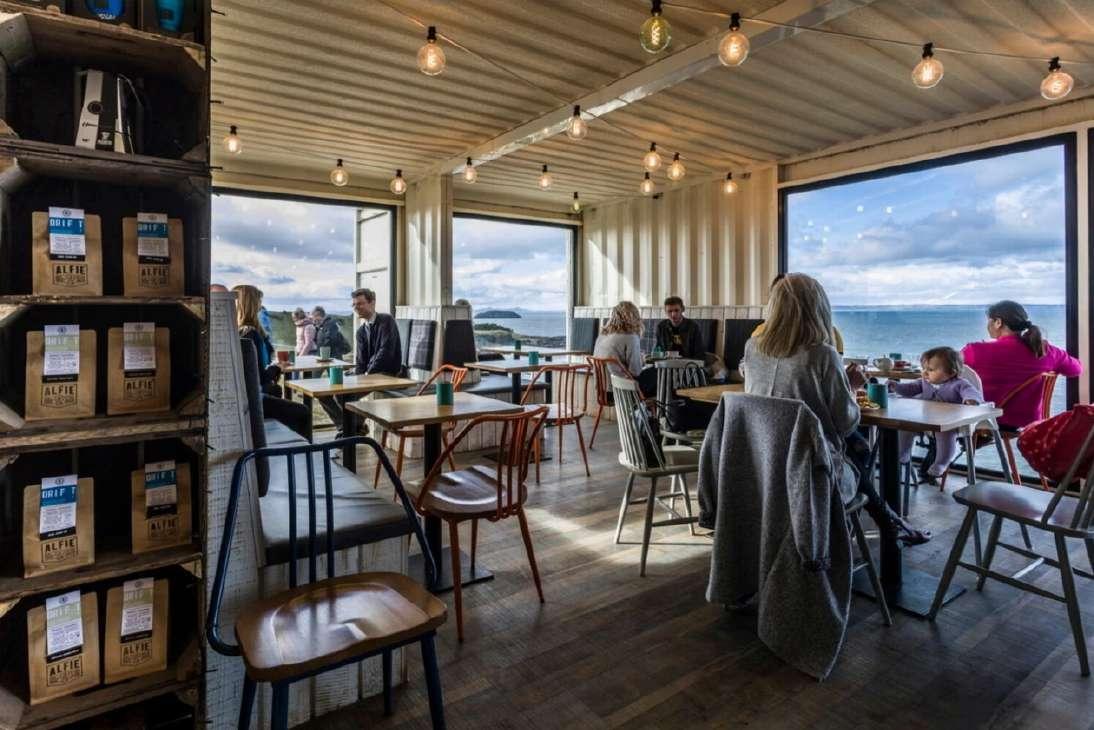 The Drift Coffee House in North Berwick was a takeaway during lockdown and is now used as a meeting venue for those working from home © Drift
The Drift Coffee House in North Berwick was a takeaway during lockdown and is now used as a meeting venue for those working from home © Drift
Bright lights, big cities
The staying power of these changes is yet to be truly tested. Down in Epsom, Pengelly says it is early days. “There’s several years of a shakedown still to come, as businesses give up London and look at hubs [elsewhere],” she says.
Big centres, such as London and Edinburgh, will continue to exert a gravitational pull, and the efforts of employers to lure staff back to the offices may reverse some of the exodus to homeworking.
And as the short-term impact of lockdowns crystallises into a longer-term pattern, regions may also develop a new symbiosis between cities and their surroundings. KCL’s Kleinman points out that London sits at the heart of a huge “city region” in south-east England, whereas cities like Oxford benefit from the relocation of start-ups initially incubated in the capital.

In Scotland, council officials see Edinburgh and the surrounding Lothians as complementary, not competition. Watson, The Lighthouse’s co-owner, says: “We need the central Edinburgh market to be performing well because then those people working in Edinburgh reach the point that they can move out and afford to live here and come to us two or three days a week.”
What remains to be seen is how — or if — policy will adjust to accommodate this tentative new normal. Speaking at the Anthropy conference on the future of the UK last week, mayor of London
Sadiq Khan said he would advise against businesses “making long term decisions [on central London], based on the temporary position”. Epsom, on the other hand, has just completed a public consultation for a local plan running to 2040, which is likely to take into account how voters’ attitudes towards their town have shifted.
Not everybody is a convert. Hamed Ovaisi, director at SO Legal, a solicitors practice with branches including in London as well as Hastings, is sceptical about the benefits working from home is bringing to the local economy.
“Hastings is very transient and tourist reliant. Weekends [are] packed with tourists and walkers, midweek locals and [it’s] practically dead. Most pubs and restaurants have actually changed their opening times as the high streets are very quiet.”
Ultimately, it is the wider economic forces — from energy prices to the inflated cost of living — that could decide whether these growing, but fragile, work-from-home communities shrink or thrive.

“The interesting thing will be what happens this autumn and winter,” says the otherwise optimistic Pengelly. “When you’re sitting alone at your kitchen table, you get really cold.”
Additional reporting by Chris Cook
reporting by Chris CookCopyright The Financial Times Limited 2022. All rights reserved.
